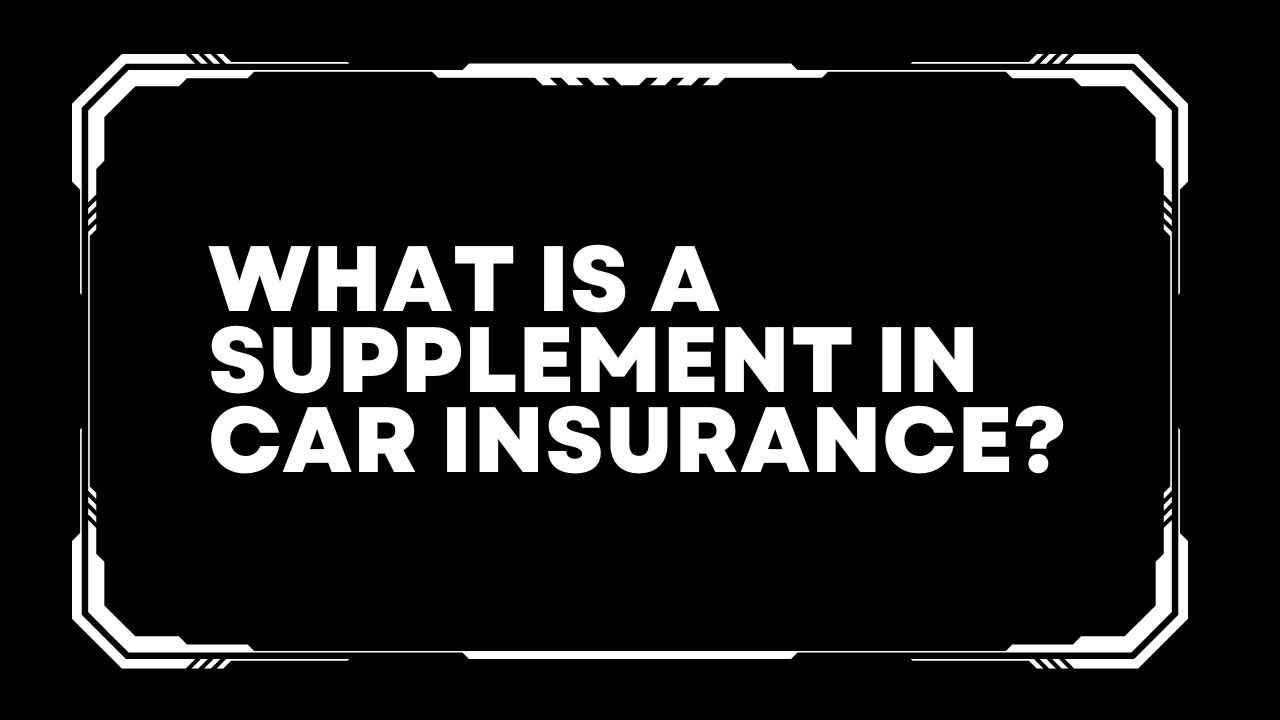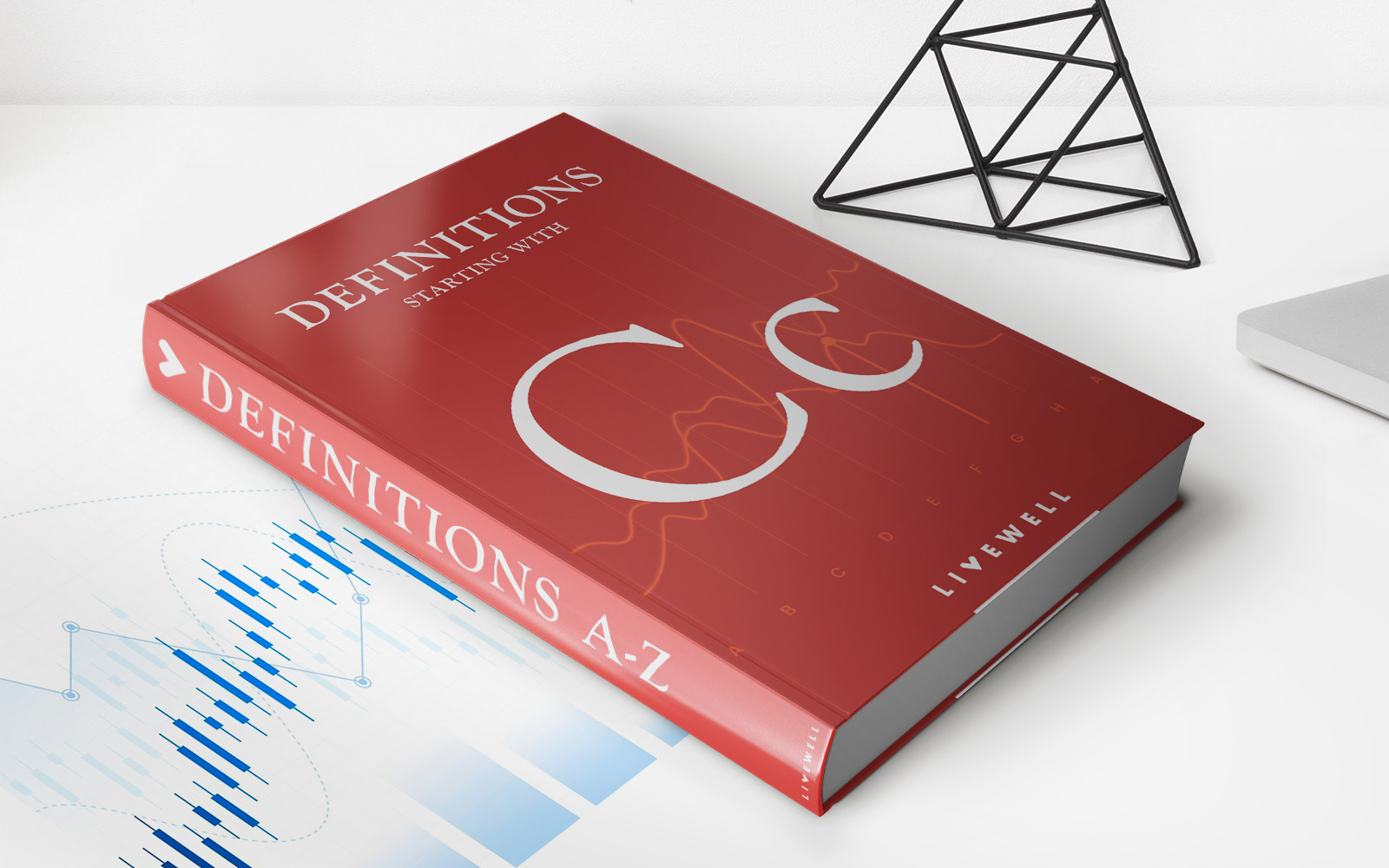

Finance
What Is An Auto Insurance Binder
Modified: March 1, 2024
Learn about auto insurance binders and how they relate to finance. Understand the importance of binders in securing coverage for your vehicle.
(Many of the links in this article redirect to a specific reviewed product. Your purchase of these products through affiliate links helps to generate commission for LiveWell, at no extra cost. Learn more)
Table of Contents
- Introduction
- Definition of an Auto Insurance Binder
- Purpose of an Auto Insurance Binder
- How an Auto Insurance Binder Works
- Duration of an Auto Insurance Binder
- Coverage Provided by an Auto Insurance Binder
- Obtaining an Auto Insurance Binder
- Cost of an Auto Insurance Binder
- Limitations of an Auto Insurance Binder
- Conclusion
Introduction
Welcome to the world of auto insurance! Whether you’re a new driver or a seasoned road warrior, understanding the ins and outs of auto insurance is crucial for protecting yourself and your vehicle. One term you may come across during your insurance journey is an auto insurance binder. But what exactly is an auto insurance binder?
An auto insurance binder serves as a temporary proof of insurance coverage. It is a document that is issued by an insurance company to provide immediate coverage until the finalized insurance policy is issued. Think of it as a temporary contract that bridges the gap between purchasing a policy and receiving the official document.
Needless to say, an auto insurance binder is an essential component of the insurance process. It is designed to provide valuable coverage during the waiting period between purchasing a policy and receiving the official documentation.
In the following sections, we will explore the definition, purpose, and mechanics of an auto insurance binder, as well as the coverage provided, obtaining one, associated costs, and its limitations. By the end of this article, you will have a comprehensive understanding of this important aspect of auto insurance.
Definition of an Auto Insurance Binder
An auto insurance binder is a document issued by an insurance company that provides temporary proof of insurance coverage. It serves as a contractual agreement between the policyholder and the insurance company, providing immediate coverage until the final insurance policy is issued.
Think of an auto insurance binder as a temporary contract that establishes the terms and conditions of coverage. It outlines important details such as the effective date of coverage, the types of coverage included, the limits of coverage, and any applicable deductibles.
Insurance companies issue binders to ensure that policyholders have immediate protection while waiting for the underwriting and approval process to be completed. This is particularly important for new auto insurance policies or when changes are made to existing policies.
Auto insurance binders are typically issued for a limited period, such as 30 days. They provide a temporary solution that allows the policyholder to legally drive their vehicle and meet the insurance requirements set by the state or financing institution.
It is important to note that an auto insurance binder is not a long-term solution. It is merely a temporary placeholder until the official insurance policy is issued. Once the policy is finalized, the binder is no longer valid, and the policy terms and conditions outlined in the official document take effect.
Now that we have established the definition of an auto insurance binder, let’s delve into its purpose and how it works in the next section.
Purpose of an Auto Insurance Binder
The purpose of an auto insurance binder is to provide immediate coverage for policyholders while they await the issuance of the official insurance policy. It serves as a temporary proof of insurance that allows policyholders to legally drive their vehicles and meet the requirements set by state laws and financing institutions.
When you purchase a new auto insurance policy or make changes to an existing policy, there is often a waiting period while the insurance company processes your application and finalizes the policy details. During this time, you still need to have insurance coverage in place to protect yourself and your vehicle.
An auto insurance binder bridges this gap by offering temporary coverage until the official policy is issued. It ensures that you are legally protected while you wait for the insurance company to complete the necessary administrative work.
Another important purpose of an auto insurance binder is to provide proof of coverage. This document shows that you have an active insurance policy in place, even if the official policy documents have not yet been received. This can be important in situations where you need to provide evidence of insurance, such as for vehicle registration, loan approval, or after an accident.
By having an auto insurance binder, you can have peace of mind knowing that you are covered in the event of an accident, theft, or other covered events while you await the issuance of the official policy.
Now that we understand the purpose of an auto insurance binder, let’s explore how it works and the duration of coverage in the next section.
How an Auto Insurance Binder Works
An auto insurance binder functions as a temporary contract between the insurance company and the policyholder, bridging the gap between purchasing a policy and receiving the official documentation. It provides immediate coverage and serves as proof of insurance until the final policy is issued.
When you request an auto insurance policy or make changes to an existing policy, the insurance company will review your application and assess your risk profile. During this process, they may require additional information or documents to finalize your policy.
While the insurance company completes the underwriting process and prepares the official policy documents, they issue an auto insurance binder to ensure that you have coverage in place. The binder typically includes important details such as the effective date, coverage types, policy limits, deductibles, and any specific terms or conditions.
Once the binder is issued, it is your responsibility to review and understand the terms and coverage provided. If you have any questions or need clarification, it’s important to reach out to your insurance agent or representative for guidance.
During the period covered by the binder, you are protected against covered risks, such as accident damage, theft, or liability claims. It’s crucial to note that the coverage provided by the binder is subject to the terms outlined in the document. Understanding the limitations and exclusions is vital to ensure you have the protection you need.
It’s important to remember that an auto insurance binder is only valid for a limited period, typically 30 days. The insurance company is expected to issue the final policy before the binder expires. Once the official policy is issued, it supersedes the binder, and its terms and conditions take effect.
In some cases, if the insurance company is unable to issue the policy within the binder period, they may extend the binder’s validity or issue another binder to ensure uninterrupted coverage.
Now that we understand how an auto insurance binder works, let’s explore the duration of coverage in the next section.
Duration of an Auto Insurance Binder
The duration of an auto insurance binder is typically for a limited period, often 30 days. It serves as a temporary solution that provides immediate coverage while the insurance company processes your application and prepares the official insurance policy.
During the binder period, you are legally covered and can drive your vehicle with the assurance that you have insurance in place. This is especially important when purchasing a new vehicle or making changes to an existing policy. The binder ensures that you meet the insurance requirements set by state laws and financing institutions.
It is important to note that the duration of the binder is determined by the insurance company. Depending on their internal processes and the complexity of your application, they may issue a binder for a shorter or longer period.
If the insurance company is unable to issue the final policy within the binder period, they may extend the binder’s validity or issue another binder. This ensures that you maintain continuous coverage without any lapses.
It is essential to keep track of the expiration date of the binder and ensure that you understand when the official policy will be issued. Once the official policy is finalized, it supersedes the binder, and its terms and conditions become effective.
Remember, the duration of the binder is temporary, and it is crucial to communicate with your insurance agent or representative if there are any delays in the issuance of the final policy. They can provide guidance on how to proceed and ensure that you have the necessary coverage during the transition period.
Now that we have explored the duration of an auto insurance binder, let’s dive into the coverage provided by a binder in the next section.
Coverage Provided by an Auto Insurance Binder
An auto insurance binder provides temporary coverage for policyholders while they await the issuance of the official insurance policy. The coverage provided by the binder is typically similar to what will be offered in the final policy, but it is important to review the details to understand the specific coverage provided.
While the exact coverage may vary depending on the insurance company and policy, an auto insurance binder generally includes the following types of coverage:
- Liability Coverage: This coverage protects you financially if you are at fault in an accident and cause injury or damage to someone else’s property. It typically includes bodily injury liability and property damage liability.
- Collision Coverage: This coverage helps pay for repairs or replacement of your vehicle if it is damaged in a collision, regardless of who is at fault.
- Comprehensive Coverage: This coverage provides protection for damage to your vehicle caused by events other than collisions, such as theft, vandalism, fire, or natural disasters.
- Uninsured/Underinsured Motorist Coverage: This coverage helps cover medical expenses and damages if you are involved in an accident with a driver who does not have insurance or has insufficient coverage.
It is important to carefully review the insurance binder to understand the coverage limits, deductibles, and any specific terms or conditions that apply. The binder should clearly outline the coverage being provided, ensuring that you are aware of your level of protection during the temporary period.
It’s worth noting that while an auto insurance binder provides immediate coverage, it may not include all the optional coverage or endorsements that you have requested. These additional coverages may be added once the final policy is issued, so it’s essential to review the final policy documents to ensure that your insurance needs are fully met.
Now that we’ve explored the coverage provided by an auto insurance binder, let’s move on to understanding how to obtain one.
Obtaining an Auto Insurance Binder
Obtaining an auto insurance binder is a relatively straightforward process. It typically begins by contacting an insurance company or an insurance agent to request a new auto insurance policy or make changes to an existing policy.
Here are the steps involved in obtaining an auto insurance binder:
- Research and Comparison: Start by researching different insurance companies and policies to find the one that best suits your needs. Consider factors such as coverage options, pricing, customer reviews, and financial stability.
- Contact an Insurance Company or Agent: Once you have identified a suitable insurance provider, reach out to them either through their website, phone, or in-person to initiate the process of obtaining an auto insurance binder.
- Provide Necessary Information: The insurance company or agent will ask for specific information, such as your personal details, vehicle information, driving history, and any additional drivers on the policy. It’s important to provide accurate and complete information to ensure an accurate quote and coverage.
- Request a Binder: During the application process, inform the insurance company or agent that you would like to request an auto insurance binder. They will prepare the necessary documents and issue the binder to provide temporary coverage.
- Review and Understand: Once you receive the auto insurance binder, carefully review it to understand the coverage provided, effective dates, policy limits, deductibles, and any terms or conditions. If you have any questions or need clarification, don’t hesitate to ask your insurance agent.
- Payment and Finalization: The insurance company will provide instructions for submitting payment for the insurance coverage outlined in the binder. Once the payment is processed, the insurance company will proceed with finalizing the policy documents.
It’s important to note that the process may vary slightly depending on the insurance company and the specific circumstances of your insurance request.
Remember to keep a copy of the auto insurance binder as proof of coverage until you receive the official insurance policy. It may be required for certain transactions, such as vehicle registration or loan approval.
Now that we’ve discussed how to obtain an auto insurance binder, let’s explore the associated costs in the next section.
Cost of an Auto Insurance Binder
The cost of an auto insurance binder can vary depending on various factors, including the insurance company, the type of coverage requested, the duration of the binder, and your individual risk profile. It’s important to note that the cost of a binder is typically a fraction of the total premium for the full insurance policy.
When obtaining an auto insurance binder, you will likely be required to make an initial payment to secure coverage during the temporary period. This payment is often referred to as a binder payment or a down payment. The amount of the payment will depend on the terms set by the insurance company and the specific coverage and deductibles selected.
Insurance companies determine the cost of an auto insurance binder based on a variety of factors, including:
- Driving History: Your driving history, including accidents, citations, and claims, can impact the cost of the binder. A clean driving record may result in a lower premium.
- Vehicle Type: The make, model, and year of your vehicle can affect the cost of the binder. The value and safety features of the vehicle are considered when determining the premium.
- Coverage Limits: The higher the coverage limits you select, the higher the premium is likely to be. It’s important to strike a balance between adequate coverage and affordability.
- Deductibles: The deductible is the amount you are responsible for paying out of pocket before insurance coverage kicks in. Choosing a higher deductible can lower the cost of the binder, but you should consider your ability to pay the deductible in the event of a claim.
It’s important to compare quotes from different insurance companies to find the best price for your auto insurance binder. Remember to consider not only the cost but also the coverage and customer service reputation of the insurance provider.
It’s worth noting that the cost of the auto insurance binder is typically a fraction of the total premium for the full insurance policy. Once the official policy is issued, you will be provided with detailed information regarding the total premium and payment options going forward.
Now that we’ve covered the cost of an auto insurance binder, let’s explore the limitations associated with binders in the next section.
Limitations of an Auto Insurance Binder
While an auto insurance binder provides temporary coverage and proof of insurance, it is important to be aware of its limitations. Understanding these limitations will help you navigate the insurance process and ensure that your coverage needs are met.
Here are some key limitations of an auto insurance binder:
- Temporary Coverage: An auto insurance binder is meant to be a temporary solution until the official policy is issued. Once the official policy is in effect, the terms and conditions outlined in the policy will govern your coverage.
- Specific Duration: The binder has a specific duration, typically 30 days, during which it provides coverage. It is essential to understand the expiration date and ensure that the official policy is issued before the binder expires.
- Limitations on Coverage and Add-ons: Depending on the insurance company, the coverage provided by the binder may not include all the optional coverages or endorsements you have requested. These additional coverages may be added once the final policy is issued, so it’s important to review the final policy documents carefully.
- Binder May Be Revised or Withdrawn: Insurance companies reserve the right to revise or withdraw the binder if there are changes or discrepancies in the information provided during the underwriting process. It is crucial to provide accurate and truthful information to ensure the validity of the binder.
- No Grace Period: An auto insurance binder does not typically have a grace period. If you fail to make the required payment for the full policy before the binder expires, your coverage may lapse, leaving you uninsured.
- Policy Terms and Conditions: The terms and conditions of the official policy, once issued, will supersede any provisions outlined in the binder. It’s important to review and understand the final policy to ensure that you have the desired coverage.
It’s crucial to communicate with your insurance agent or representative if there are any changes or delays in the issuance of the final policy. They can provide guidance on how to proceed and ensure that you have continuous coverage.
Now that we have discussed the limitations of an auto insurance binder, let’s conclude our article.
Conclusion
Auto insurance binders play a vital role in providing temporary coverage and proof of insurance while awaiting the issuance of the official policy. They bridge the gap between purchasing a policy and receiving the finalized documentation, ensuring that drivers are legally protected and meet insurance requirements.
Understanding the definition, purpose, mechanics, and limitations of an auto insurance binder is essential for every policyholder. It allows you to navigate the insurance process with confidence and ensures that you have the necessary coverage during the transition period.
Obtaining an auto insurance binder involves researching insurance companies, providing necessary information, requesting the binder, and carefully reviewing the coverage provided. Comparing quotes and selecting the right insurance provider is crucial to finding the best price and coverage for your needs.
While an auto insurance binder offers temporary coverage, it does have limitations. It is important to be aware of the expiration date of the binder, understand the coverage provided, and review the final policy to ensure that your insurance needs are fully met.
In conclusion, an auto insurance binder is a valuable tool that provides immediate coverage and proof of insurance. It ensures that policyholders are protected while awaiting the issuance of the official policy. By understanding the role and limitations of an auto insurance binder, you can confidently navigate the insurance process and ensure that you have the coverage you need to drive with peace of mind.














